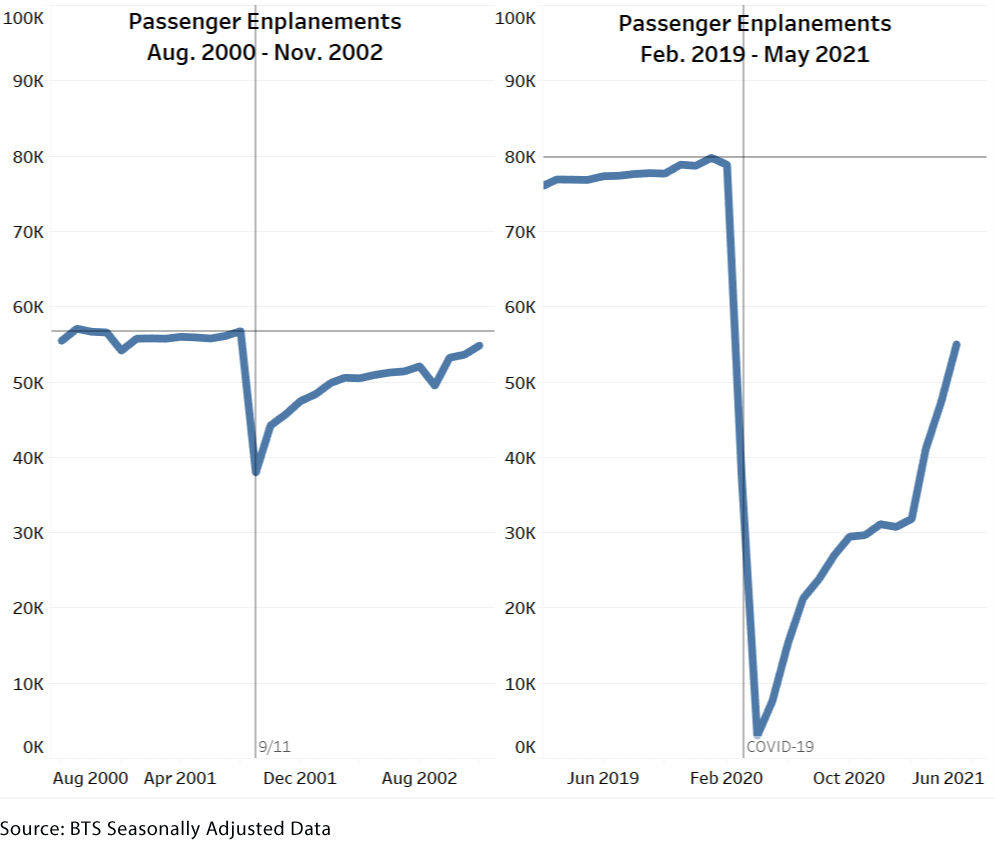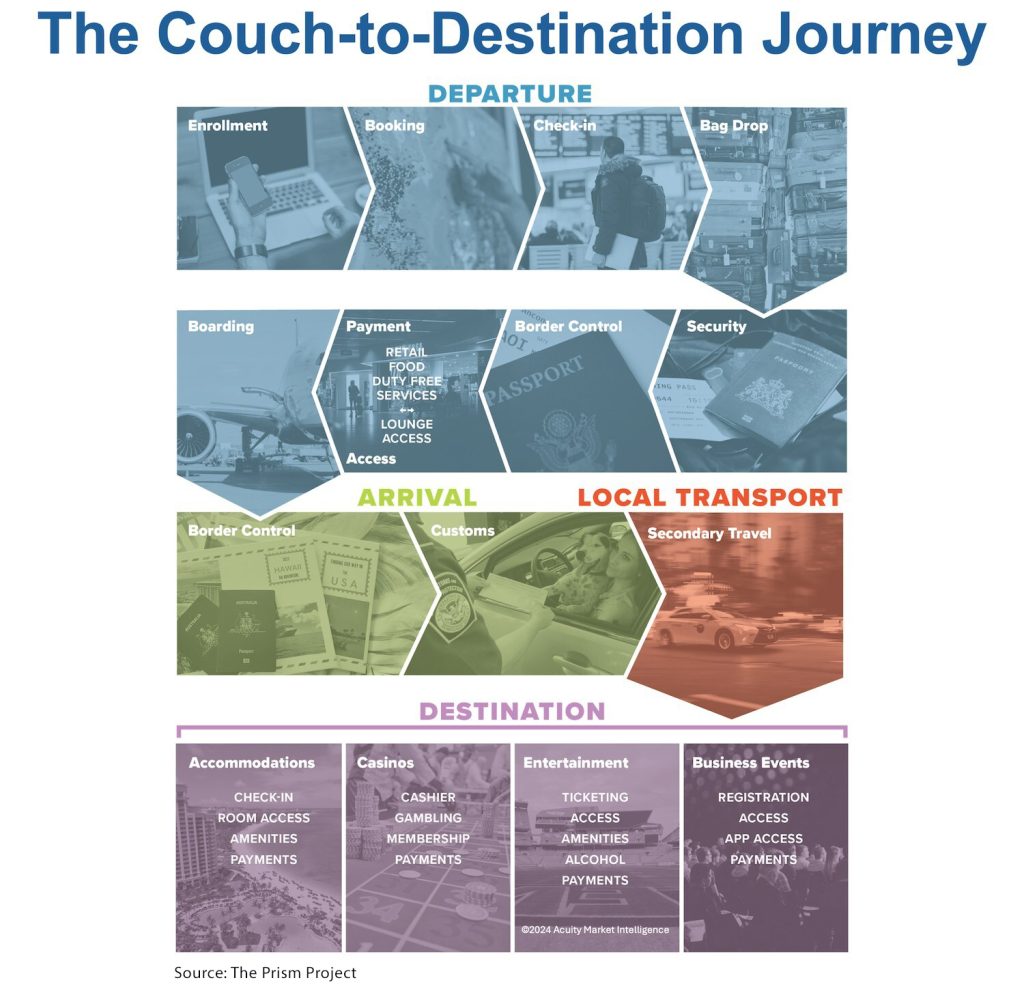Will the recent events in New Orleans impact travel to some degree in the days to come? No two events have shaken the U.S. travel and hospitality industry more than September 11, 2001, and the COVID-19 pandemic, which interestingly was unfolding roughly 20 years later. The U.S. BTS (Bureau of Transportations Statistics did an interesting comparison on the two events and the impact on travel.
What ultimately occurred in both cases was a steep drop in travel initially, and a slow upward trajectory of a recovery. The drop in monthly passengers in September 2001 from the previous month is significantly less steep (33%) than the drop in 2020 (96%)—and it took a bit longer to fully return to travel following COVID, perhaps because COVID was a more long-drawn out event.

The World Economic Forum suggests in 2021, overall passenger numbers only reached 47% of 2019 levels worldwide. In general, the Americas saw a faster recovery than the rest of the world. Aisa Pacific experienced the slowest recovery, likely due to stricter lockdowns. It took roughly four years for global tourism to return to pre-pandemic levels, but it has in fact returned in full force.
Still, I wonder if the recent events in New Orleans might impact travel to some degree in the days to come. Will people be concerned about getting on planes? Will travel be impacted in some way in 2025? We will have to wait and see how everything unfolds to fully answer these questions, but one thing we do know is technology can help make travel a little bit more secure.
Following September 11, 2001, commercial flights began to reopen two days later, but with stricter policies and checks. Now, more than 20 years later, we have new technologies at our disposal that can secure travel even further.
The Rise of Biometrics
For today’s blog, let’s consider biometrics in the travel industry. For starters, this segment of technology will trend upwards in the next several years.
The Prism Project’s Biometric Digital Identity Travel and Hospitality Prism Report, published by Acuity Market Intelligence, forecasts $72 billion in global revenue from 2024 through 2028.
The technology can be used in several different ways and in several different places such as air travel, hotels and resorts, casinos, sports venues, theme parks, and conference venues, just to name a few. Asia Pacific leads the market, with Europe and North America close behind.
While biometrics can certainly make travel more secure, it also aims to create an entirely new travel experience. The report presents the couch-to-destination journey, which can be spurred on by biometric digital identity. This framework illustrates how biometric solutions anchor a guest’s identity at the beginning of their journey, allowing every following transaction to ensure security, privacy, and user convenience.

With all this in mind, what will travel look like in the days ahead? The opportunities are limitless, with the advent of such innovation and technological advances. Any thoughts? What would you like to see as you travel in the days ahead?
Want to tweet about this article? Use hashtags #IoT #sustainability #AI #5G #cloud #edge #futureofwork #digitaltransformation #green #ecosystem #environmental #circularworld #travel #biometrics


